
 |
|
|
Soybeans
Volume 58 Number 12 Date 07/25/2013 SOYBEAN APHID - Preliminary results of the annual survey now in progress indicate aphid populations have exceeded the economic threshold of 250 per plant in a very small percentage of Wisconsin soybean fields, while counts at most sites remain low. Examination of 88 soybean fields (R2-R3) as far north as Chippewa County during the period of July 16-24 found very low densities of 0-25 aphids per plant in 86% of fields, low densities of 26-100 per plant in 10% of fields, moderate densities of 101-249 per plant in 2% of fields, and economic densities of 309-325 per plant in 2% of fields (one field each in Waupaca and Waushara counties). Populations appear to be highest in the central districts at this time. Surveys found many winged adults (alates) this week, indicating the aphids are redistributing within fields and may soon disperse to infest other fields. Also observed were significant populations of ladybeetles and parasitic wasps in the most heavily infested fields. Soybean aphid populations build most rapidly at temperatures of 70-80°F and could increase markedly with the cooler weather predicted for the next several days. All soybean fields entering the early reproductive stages should be evaluated in the week ahead to assess aphid densities. JAPANESE BEETLE - Defoliation is increasing in soybeans and other crops. Beetles were observed in 42% of soybean fields sampled in the past week and leaf injury generally ranged from 5-10% field wide. Damage thus far has not justified treatment, but defoliation levels at some sites are approaching the 20% economic threshold for early reproductive (R1-R2) soybeans. GREEN CLOVERWORM - Larvae of various sizes are causing light defoliation of soybeans from Kenosha County in the southeast to Chippewa County in the northwest. Counts are currently less than six per 100 sweeps. Larval populations should be monitored throughout August since treatment is occasionally required to prevent economic defoliation. -- Krista Hamilton, DATCP Entomologist 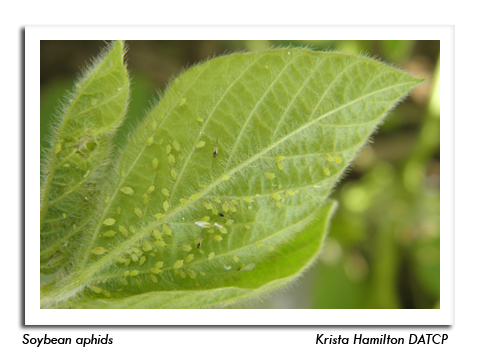
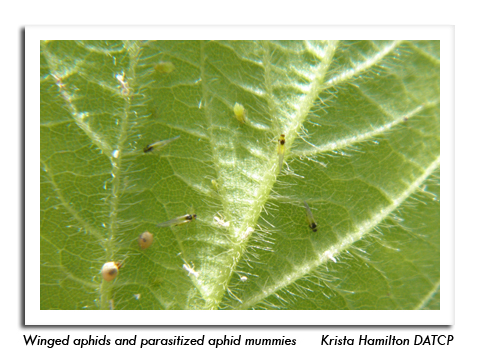
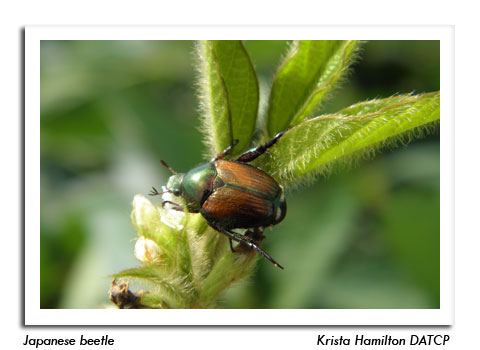
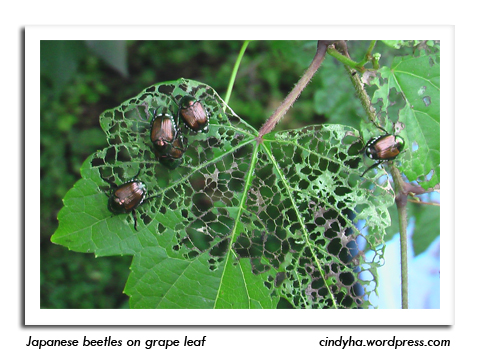
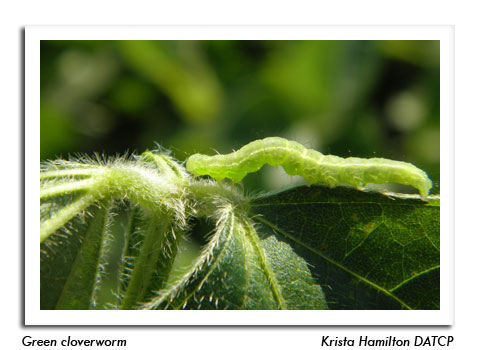

|
|
|